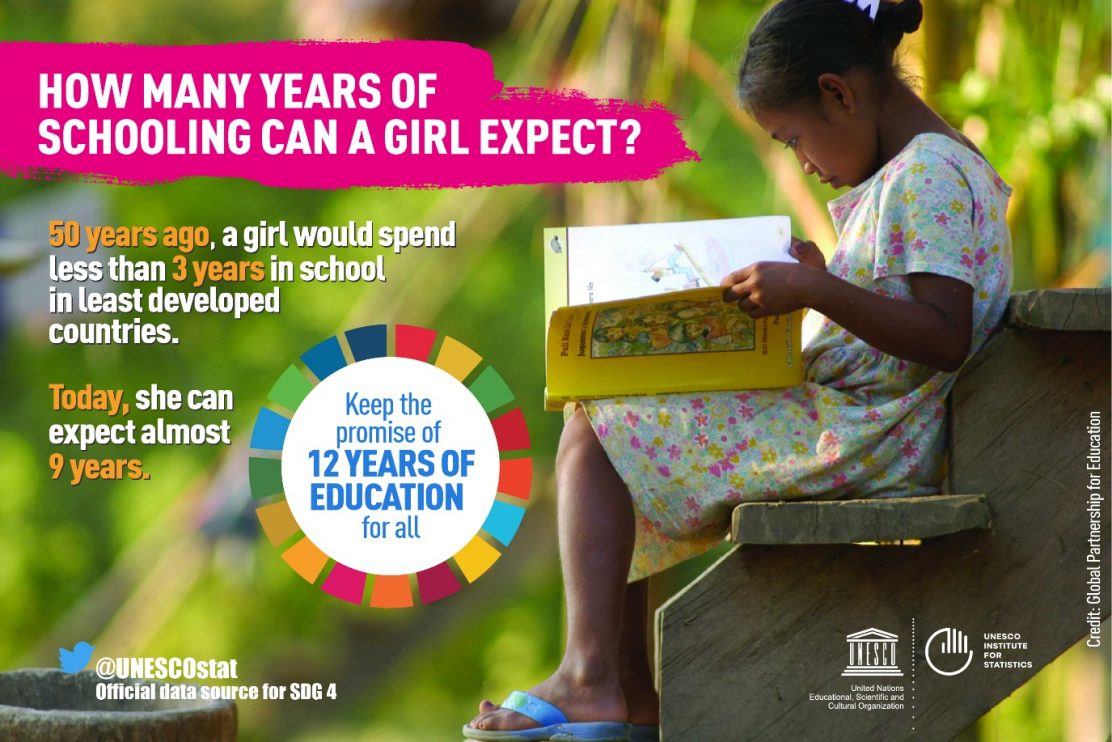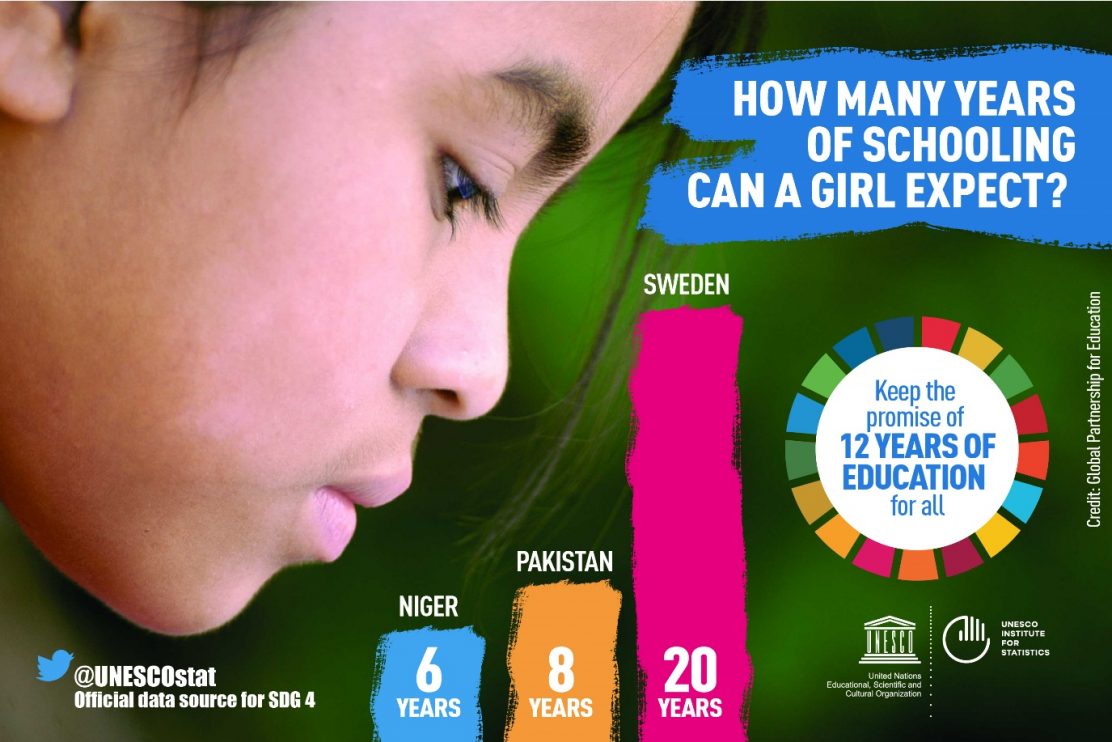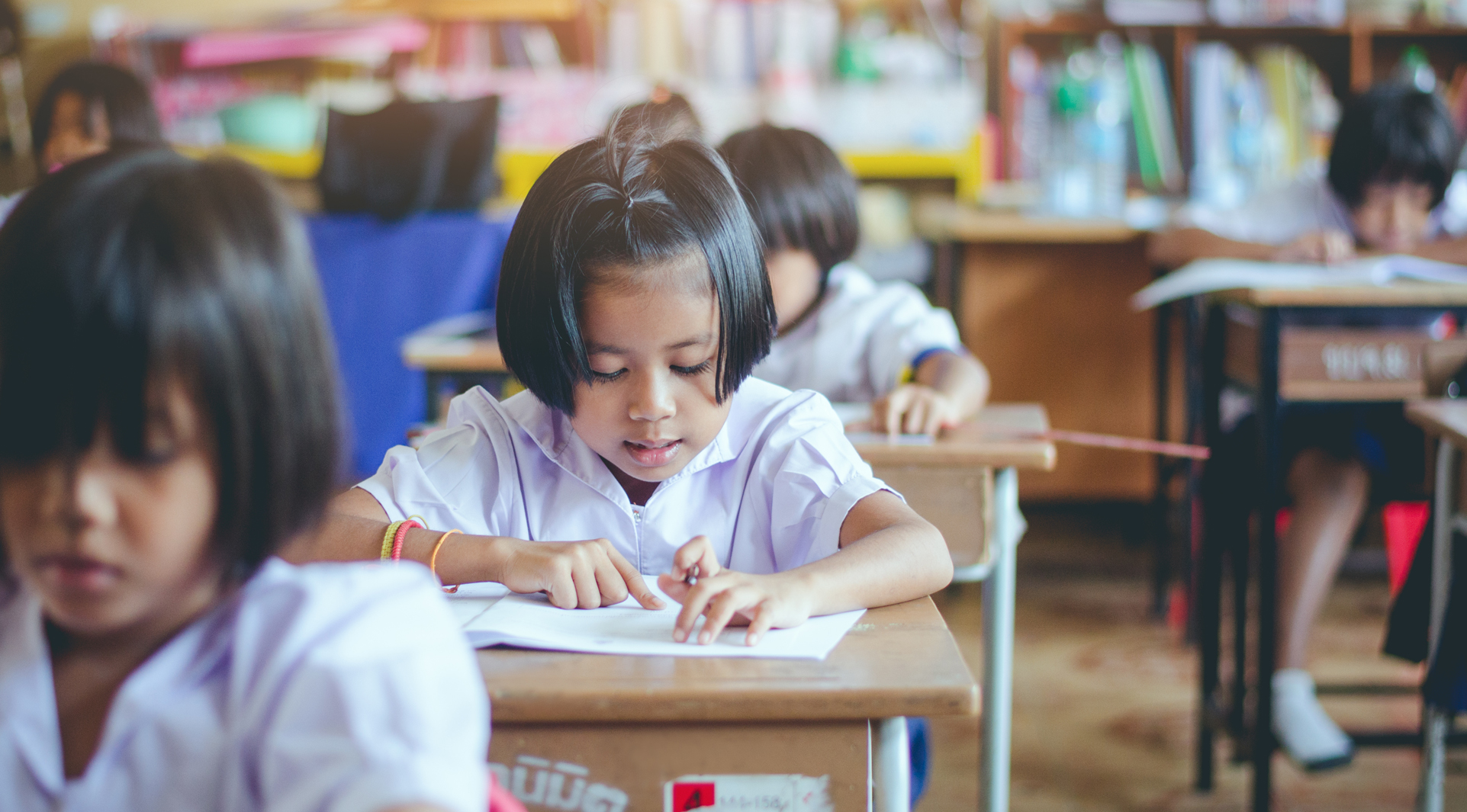Data to Celebrate 50 Years of Progress on Girls’ Education
This NORRAG Highlights was prepared for the International Women’s Day and is published by Silvia Montoya, Director of the UNESCO Institute for Statistics (UIS), which is the official UN repository for statistics in the fields of education, science and technology, culture and communications. In this post, the author indicates that there has been significant progress when it comes to school life expectancy for girls, which is the number of years of education a child can expect to receive, in high-income countries and in least developed countries. In addition, there have been improvements when it comes to the average female life expectancy rate according to World Bank data. The author ends the article by encouraging more data-generation and more efforts to be done to support vulnerable women.
This post was also co-published by UIS Blog.
On International Women’s Day, we can look back at 50 years of extraordinary efforts to get girls into the classroom. Thanks to these efforts, the gender gap in education is closing and has been closing for decades. And today, the majority of girls worldwide complete primary school. Girls are also in school for longer than ever before. As 50 years of data produced by the UNESCO Institute for Statistics (UIS) show, girls’ school life expectancy is on the rise.
School life expectancy is the number of years of education a child can expect to receive. Overall the trends look good, even though school life expectancy also includes the years that girls repeat grades. Back in 1970, the global average for girls’ school life expectancy, spanning primary, secondary and tertiary education, was around 6.7 years. Today, it tops 12 years.
Greatest progress in the least developed countries
The world’s high-income countries started with a clear advantage: girls attaining an already impressive 11.5 years of education in 1970. But they have pushed this up still further to just over 17 years today. Nonetheless, we have seen the greatest progress in the world’s Least Developed Countries, even though they began from a far lower starting point, with school life expectancy for girls jumping from 2.8 years to 8.9 today.

When we cast an eye across the regional data (see Table 1), we see that Southern Asia has managed to triple the years girls will spend in school since 1970 – from 3.8 to 12 – outpacing all other regions in terms of the scale of the increase. The average expected school duration for girls has more than doubled in Northern Africa and Western Asia (from 5.3 to 12.7 years) and in sub-Saharan Africa (from 3.3 to 8.8). While this is an impressive achievement, sub-Saharan Africa is still far from the goal of providing 12 years of universal primary and secondary education as part of SDG 4.
| Table 1. School life expectancy from primary to tertiary education (years) | ||||
| Region | Girls | Boys | ||
| 1970 | 2017 | 1970 | 2017 | |
| Europe and Northern America | 12.2 (1973) | 16.9 | 13 (1973) | 16 |
| Latin America and the Caribbean | 10.3 | 15 | 10.5 | 14.1 |
| Central Asia | n/a | 12.8 | n/a | 12.9 |
| Southern Asia | 3.8 | 12 | 7.1 | 11.6 |
| Eastern and South-Eastern Asia
|
7.4 (1975) | 13.8 | 9 (1975) | 13.4 |
| Northern Africa and Western Asia | 5.3 | 12.7 | 8.1 | 13.2 |
| Sub-Saharan Africa | 3.3 | 8.8 (2015) | 4.9 | 9.7 (2015) |
| Oceania | 11.7 (1983) | 17.6 | 12.2 (1983) | 17.5 |
| World | 6.7 | 12.5 | 8.6 | 12.4 |
| Least Developed Countries | 2.8 | 8.9 | 4.9 | 9.7 |
Source: UNESCO Institute for Statistics Database, 28 February 2019.
Digging down into the country data, we find a mixed picture. Almost 50 years ago, a girl in Burkina Faso could expect to receive just one year of education, while the average today is 8.7. In Morocco, school life expectancy for girls has soared from about 2.2 to 13 years since 1971. The number of years girls spend in school has tripled in Guatemala (3.5 to 10.6), India (4.1 to 13) and Rwanda (3.5 to 11.2) and doubled in countries like Colombia (6.7 to 15) and Mexico (7.2 to 14.4) since about 1970.
Although many countries can take pride in boosting school life expectancy for girls, they may still be far from the goal of ensuring 12 years of quality education by 2030. Girls are struggling to set foot in a primary classroom in countries such as Central African Republic, Chad, Mali and Niger, where more than one-third of girls of primary school age are out of school. Out-of-school rates for girls reach 72% in South Sudan and 64% in Liberia.

Overall the progress that has been made for girls’ education has been a long and often difficult journey, with many obstacles to overcome along the way. Governments, educationalists and campaigners have had to enhance access to education for millions of children – boys as well as girls – who simply had no school to go to half a century ago. But they have also had to tackle entrenched social norms and hard-wired attitudes that have kept girls out of school, and that continue to exclude many of them today, including the low value sometimes placed on their education or more valid parental fears for their safety on the way to and from school, and even while they are there.
Milestones in girls’ education
The passage of millions of girls into and through education systems has been supported by helpful milestones along the way, including the 1989 Convention on the Rights of the Child, which turns 30 this year. The most ratified human rights treaty in history enshrined the right of every child to an education. The Education for All movement that grew out of the Dakar Framework for Action in 2000 added momentum to the push for universal education, leading many countries to abolish school fees. The Millennium Development Goals aimed to have every child completing primary school, and while that particular goal was not achieved in full, it helped to drive progress. And now we have the 2030 Agenda with its vision for education, and the Sustainable Development Goals that set the targets to be achieved.
These trends chime, to some extent, with other development indicators for girls and women over recent decades. Although economic gender inequalities remain both common and large, recent research suggests that they are shrinking, with the gender pay gap falling in most countries and gender-equal inheritance systems that were once rare fast becoming the norm. Roser also points out that the global fertility rate has halved over the past 50 years and stands at just below 2.5 children per woman today.
Average female life expectancy has also increased, from a global average of 60 years in 1970 to around 74 today, according to World Bank data. High-income countries had already achieved that level of life expectancy five decades ago and have manage to push average life expectancy still further, to almost 84 years today. But we see the greatest progress on female life expectancy in the Least Developed Countries. While they began from a very low starting point of just 45 years, they have managed to add an additional 20 years since 1970, with average life expectancy for females now standing at 66 years.
It is hard to know whether greater education has helped to expand life expectancy or whether shrinking economic disparities have helped to get more girls into the classroom. Perhaps we are starting to see the impact of a decades-long virtuous circle, with success breeding success across a whole range of sectors for women and girls.
My own personal view is that education has been at the very heart of the progress that has been made. By using data as a rallying call, we must show how much more can and must be done to support the most vulnerable women and girls during the discussions at the next High-Level Political Forum on Sustainable Development in July.
Join us on social media @UNESCOstat, @norrag, and the call to #FundData for #BetterData
About the author: Silvia Montoya is the Director of the UNESCO Institute for Statistics (UIS), which is the official UN repository for statistics in the fields of education, science and technology, culture and communications.
Contribute: The NORRAG Blog provides a platform for debate and ideas exchange for education stakeholders. Therefore, if you would like to contribute to the discussion by writing your own blog post please visit our dedicated contribute page for detailed instructions on how to submit.
Disclaimer: NORRAG’s blog offers a space for dialogue about issues, research and opinion on education and development. The views and factual claims made in NORRAG posts are the responsibility of their authors and are not necessarily representative of NORRAG’s opinion, policy or activities.


Dear Silvia, Excellent update of UIS data on this issue. Being presently in a European Union mission in Guinea Bissau to formulate a project of support to education sector, I wonder if UIS could provide me with updated (2017?) data on the same issue or at least with contact with UIS staff who has been working in Guinea Bissau on this issue. I have obtained data from national authorities but I would like to check with the original source (UIS).
Thank you very much in advance
Kind regards
Francois Bernede